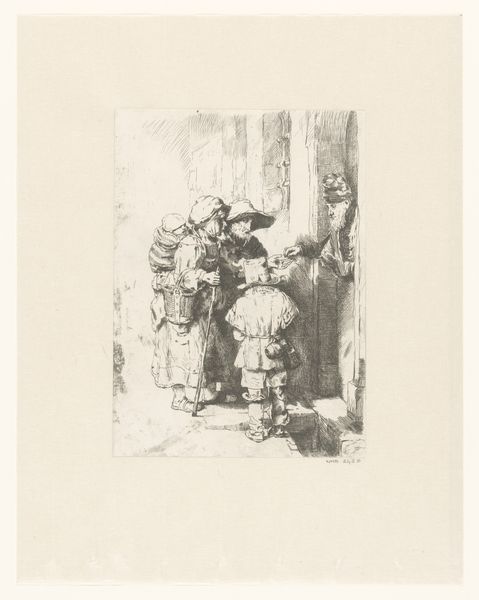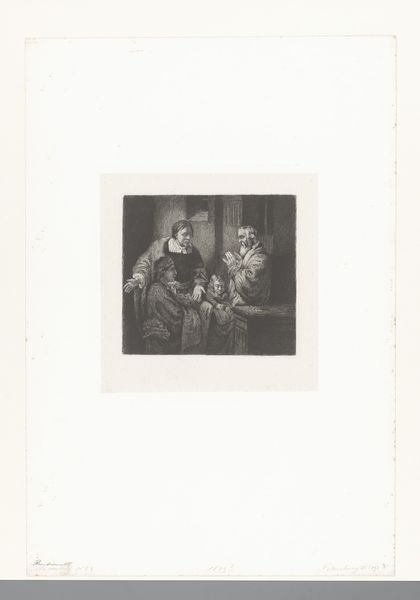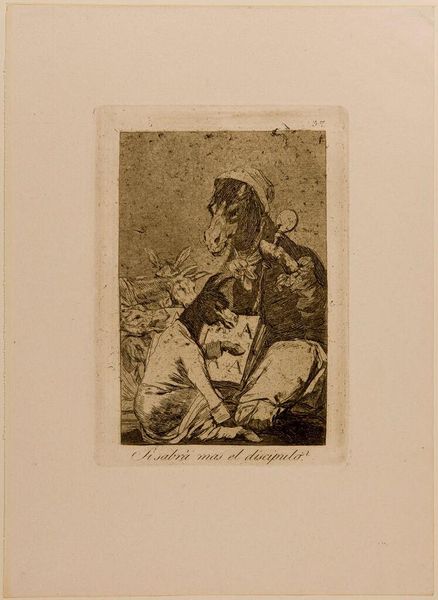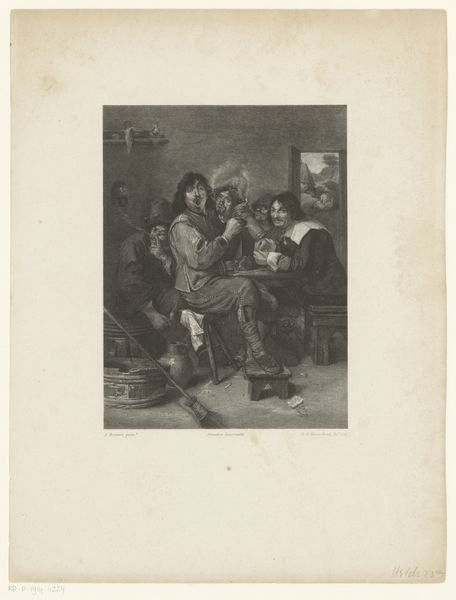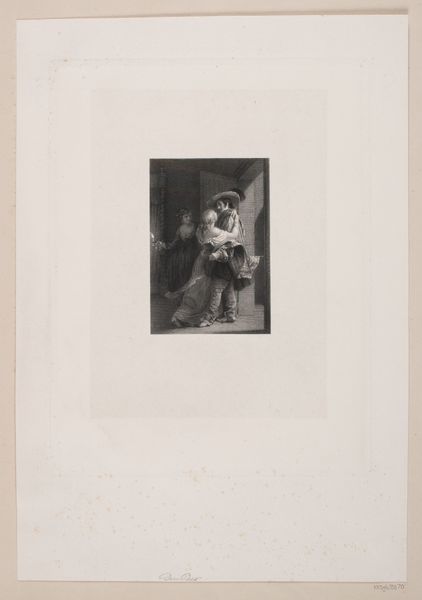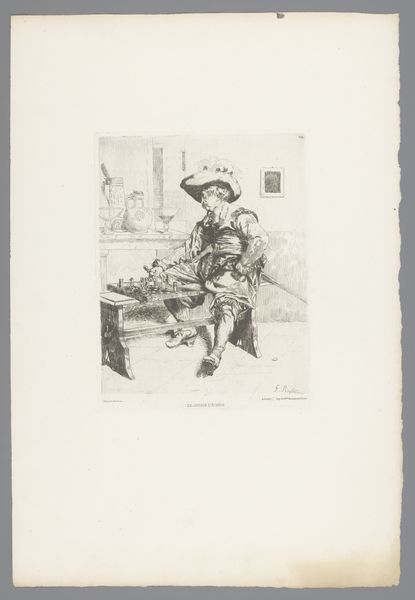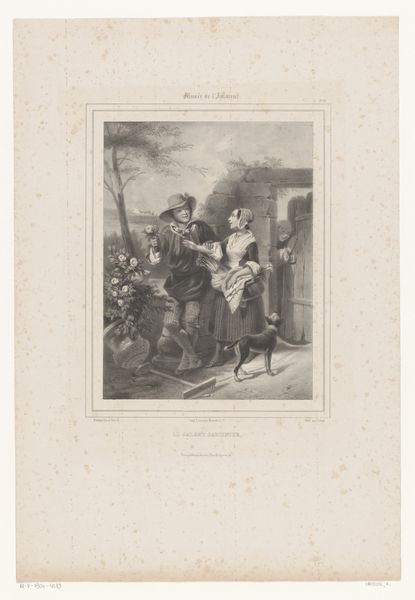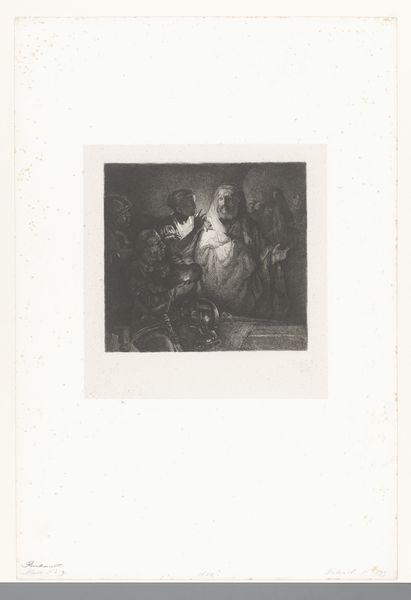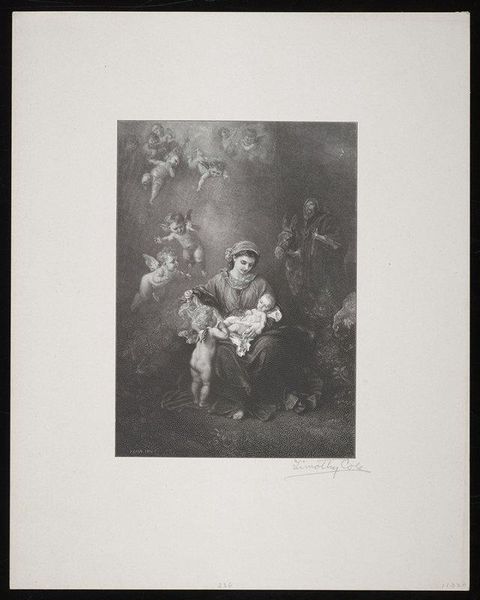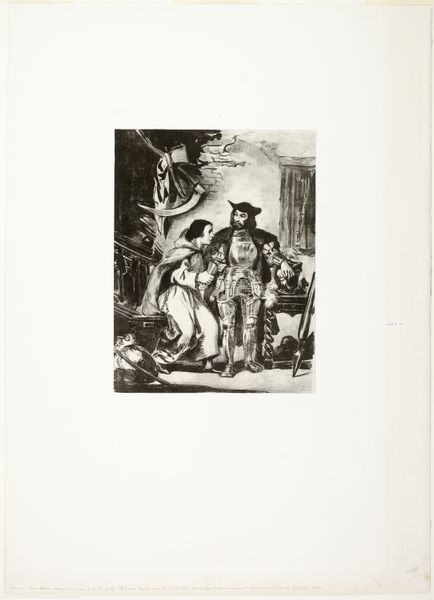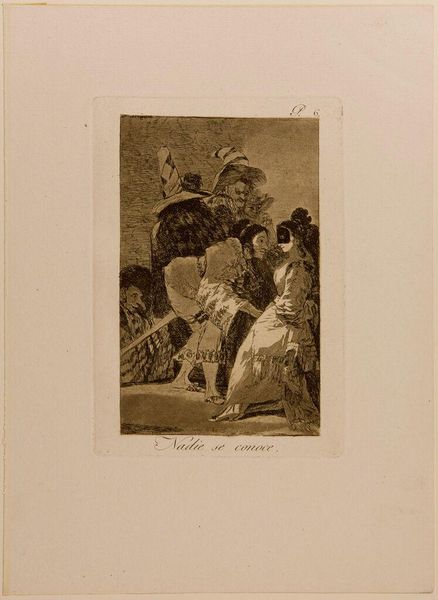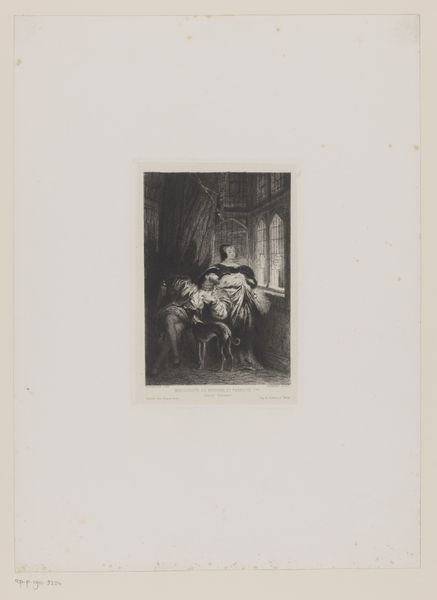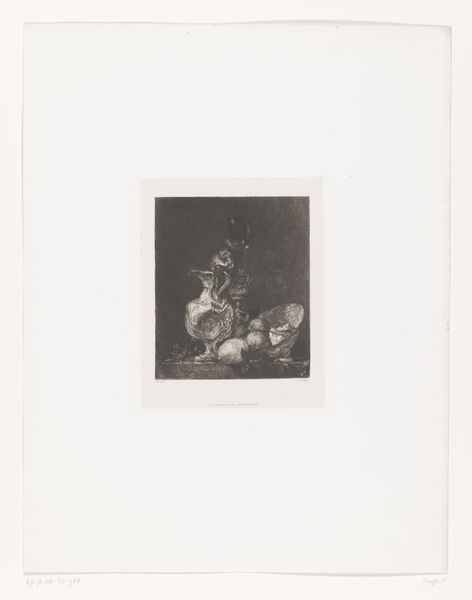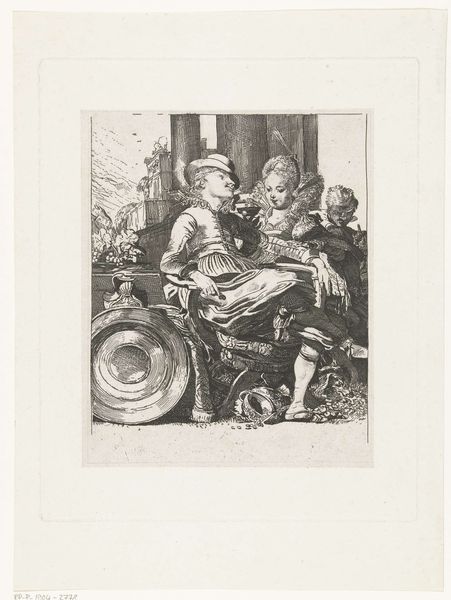
drawing, print, pencil, woodcut, wood-engraving, engraving
#
portrait
#
drawing
#
dutch-golden-age
# print
#
group-portraits
#
pencil
#
woodcut
#
line
#
wood-engraving
#
engraving
#
realism
Dimensions: 8 5/16 x 5 3/16 in. (21.11 x 13.18 cm) (image)12 1/16 x 9 9/16 in. (30.64 x 24.29 cm) (sheet)
Copyright: No Copyright - United States
Curator: What strikes me most about this image is its energy; the way the figures surge forward from the shadows is truly arresting. Editor: Indeed. And that palpable drama comes from a later wood engraving after Rembrandt’s "Night Watch" crafted around 1893 by Timothy Cole. Cole masterfully captures much of the original painting's dynamism through the skilled use of line and shadow. It now resides at the Minneapolis Institute of Art. Curator: You’re right about the line work. Cole’s graphic style lends the scene a stark, almost heroic quality, different in feel than the original's painterly richness. It gives us, for better or worse, a glimpse into the art of printmaking and popular reception of earlier eras. Editor: Yet look closely at the figures themselves. Observe their faces; there is that stern captain, his face shadowed, beside the lieutenant with a golden glow upon his...I think of leadership, command, duty, even sacrifice embedded in these archetypal forms. The print resonates deeply with a longing for heroes of old. Curator: Perhaps. Or it is a representation, reshaped in ways beyond aesthetics. Remember how the "Night Watch" became a civic symbol in Amsterdam, of powerful burghers asserting themselves in public life? Prints like Cole's, by then, disseminated ideas far beyond the canvas, changing, reinforcing, perhaps even distorting how these original values played out, politically and socially. Editor: A distortion...or an evolution? A print democratizes Rembrandt; its symbolism enters broader narratives. That central grouping, even in a reduced format, still speaks volumes. The averted glance, the poised hand…each contains stories that feed a continuous visual language, informing and reforming our understanding of societal bonds. Curator: And that continuous reformation – through technique, context, audience – is something, surely, worthy of note itself when interpreting an engraving like this one. Editor: It's precisely through those layers – of intention, interpretation, reproduction – that visual narratives continue to speak to us so powerfully, across the ages.
Comments
No comments
Be the first to comment and join the conversation on the ultimate creative platform.
